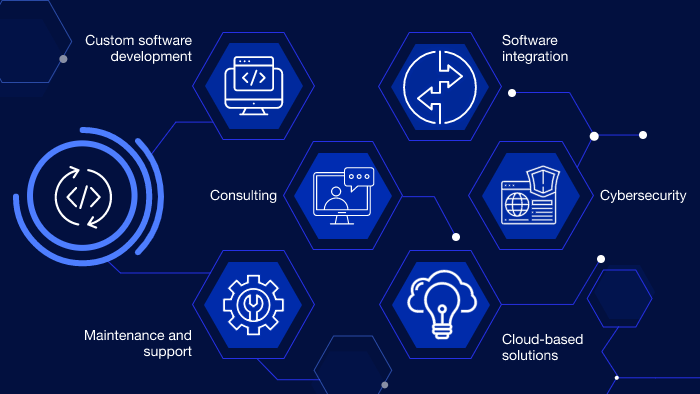It is not easy to compete in today’s fierce business landscape, especially when it comes to framing effective as well as sustainable strategies. Furthermore, it is equally crucial that these strategies don’t compromise the organizational quality of services. This is where the back office and the adoption of shared services and outsourcing models come into play as a catalyst for cost reduction initiatives.
From improvements in productivity to enhancement of overall control, the benefits of shared services go far beyond simple cost savings. According to Deloitte, these shared services and outsourcing models have yielded impressive results in terms of objectives achieved. A staggering 88% cost reduction, coupled with significant achievements in standardization and process efficiency at 78%, and 63% of organizations have reported tangible gains in overall business value.
Through this blog, we will delve deep into the world of shared services, unveiling the essential pointers to keep in mind while selecting your Shared Service Center Model.
Geographic Location and Sourcing Strategy
First and foremost, determining the geographic location and sourcing strategy for the back-office operations is quite like selecting the foundation of the cost-cutting and efficiency initiatives. This strategic decision revolves around –
-
In-house Operations: Handles back-office tasks internally within your home country. This approach offers a high level of control but may not always deliver the most cost-effective results.
-
Offshore Operations: Setting up operations in a distant country, often chosen for its lower labor costs. It can yield substantial cost savings, but managing operations from a distance presents logistical challenges.
-
Nearshore Operations: Select a location geographically closer to your home country, typically within the same region or continent. This offers cost savings while maintaining proximity, simplifying management and collaboration.
-
Outsourcing: Entails partnering with a specialized service provider, either onshore, offshore, or nearshore. This approach enables you to tap into external expertise while focusing on the core business activities.
When it comes to sourcing strategy decisions or Global Business Services (GBS) and shared service centers, it’s crucial to assess how location impacts key factors such as cost savings, talent availability, and more. For instance, Offshore and nearshore options often have lower labor and operational costs, leading to significant savings. Plus, there is a need to recognize the importance of cultural awareness and language proficiency for effective cross-border communication and collaboration.
Technology Assessment and Tool Selection for Centralization
Imagine a company is planning to centralize its financial processes by establishing a shared service center. In this scenario, the company needs to undertake a comprehensive assessment of its technology requirements and select the appropriate software, automation tools, and systems to support this centralization effort. This includes –
Assessing Tech Needs: Understand which functions will centralize or outsource and identify tech requirements to define the scope.
Selecting Tools: Choose software and automation tools aligned with cost savings, efficiency, and service quality.
-
Software: ERP, CRM, financial management
-
Automation: RPA, AI, ML
-
Systems Integration: Ensures data consistency and efficient workflows
Unlocking the Value of Service Level Agreements (SLAs)
Service Level Agreements (SLAs) are essential documents used in various industries to define the terms and expectations of service provision between a service provider and a client or customer. These agreements play a crucial role in ensuring service quality, responsiveness, and accountability. Here’s how SLAs achieve these objectives:
-
Define clear quality standards, ensuring the service provider meets or exceeds client expectations.
-
Specify response times, ensuring swift issue resolution and minimal downtime.
-
Establish accountability, defining roles and responsibilities for successful service delivery.
-
Promote transparency, building trust through clear service expectations.
-
Enable continuous improvement, with regular reviews for ongoing service quality.
-
Mitigate risks, including disaster recovery measures for service continuity.
-
Include penalties for failures and incentives for exceptional performance.
-
Address legal compliance, reducing risks by ensuring adherence to regulations.
For instance, the SLA between the telecommunications service provider and the corporate client ensures that the client’s communication needs are met with reliability, quality, and accountability, while also addressing potential risks and compliance requirements.
Customizing Shared Service Center: A Path to Operational Excellence
Of course, selecting the right shared service center model is a critical decision that can significantly impact an organization’s efficiency, cost-effectiveness, and overall performance.
The market standards on cost savings delivered by shared services range from 15% to up to 40%, mainly depending on the industrialization of processes, level of automation, and location of centers.
By carefully considering the key factors (as discussed), organizations can tailor their shared service center to align with their unique needs and strategic goals.
The undeniable facts are –
-
One, there is no approach that fits all,
-
Second, the optimal model will be different from one organization to another.
Hence it becomes crucial to conduct a thorough analysis of the organization’s requirements. It will help everyone understand the benefits and challenges associated with each model. Plus, there is a need to make an informed decision that positions the shared service center as an asset in achieving operational excellence.
Whether it involves centralization, outsourcing, or a hybrid approach, having a well-structured shared service center can contribute to cost savings, process efficiency, and more. It’s the path to achieving more with less, and it’s a journey worth embarking upon.




